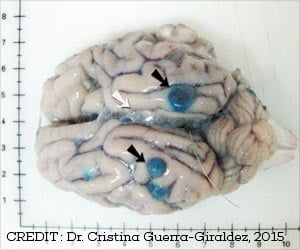Implanting a small spacer between lumbar vertebrae during a procedure called interspinous process decompression may be an effective and minimally invasive way to treat spinal stenosis.
Implanting a small spacer between lumbar vertebrae during a procedure called interspinous process decompression may be an effective and minimally invasive way to treat spinal stenosis, according to a new report.
The report is published by ECRI, an independent nonprofit health services research agency that produces systematic reviews on medical devices, drugs, biotechnologies, procedures, and health services.Spinal stenosis is a narrowing of the openings in the vertebrae that contain the spinal cord and nerve roots. The condition, usually caused by age-related degeneration of the spinal disks and osteoarthritis of the spine, may “pinch” the nerves, resulting in pain or cramping in the legs, buttocks or groin that is aggravated by standing or walking.
The position of the spine typically affects the symptoms: leaning forward reduces the pain, while leaning backward makes it worse. Treatment generally starts conservatively, with physical therapy and pain relievers, and can include epidural steroid injections. Severe cases may require surgery to decompress the spinal cord, which can include fusing two or more of the vertebrae together.
Spacer insertion has a potential role as a less costly alternative to conventional operative procedures when conservative treatments have failed or in situations in which patients are unwilling to consider more invasive surgery. One spacer, X Stop, has been approved by the Food and Drug Administration for use in patients age 50 and older with confirmed lumbar spinal stenosis. XStop was the only spacer addressed in the ECRI report; however, other versions of the spacer are under review.
According to the ECRI analysis, only one randomized controlled trial of the procedure has been reported. A total of 191 patients at nine centers were randomly assigned to undergo either the spacer procedure or to be treated nonoperatively. Results from this study suggest that for some patients, the spacer procedure reduces pain, improves function for up to two years, and reduces the need for laminectomy — surgery to remove a portion of a disc.
However, this two-year study does not compare the new procedure to other surgical decompressive procedures or treatments for spinal stenosis and does not provide long enough follow-up to determine how long the spacer will last.
Advertisement
To perform the procedure, a spine surgeon makes a one- to two-inch incision over the spine and inserts a small titanium spacer between the spinous processes (the bony wings that stick out) of two adjacent vertebrae and screws the spacer into place. The spacer is intended to keep the spine from bending too far backward, thus preventing the nerve pinching that causes pain. Since local anesthesia and intravenous sedation are used for the procedure, it can be done on an outpatient basis or with a 24-hour hospital stay.
Advertisement
“I see it as an alternative to [such] surgery, not a step before surgery. When it works, patients avoid surgery,” Anderson said. He performs the procedure about once a month, and said that about 60 percent of his patients improve with it. Anderson is a consultant for and stockholder in St. Francis Medical Technologies, Inc., the maker of X Stop.
Charges for the procedure are estimated at about $23,000; most surgeries require one or two implants, according to the ECRI report. Several major insurers, including Aetna and Cigna, do not cover the spacer implant procedure. However, in October 2006, the Centers for Medicare and Medicaid Services provided a new technology add-on payment of $4,400 for the X Stop implant when performed during a hospital stay.
Source-Newswise
SRM





